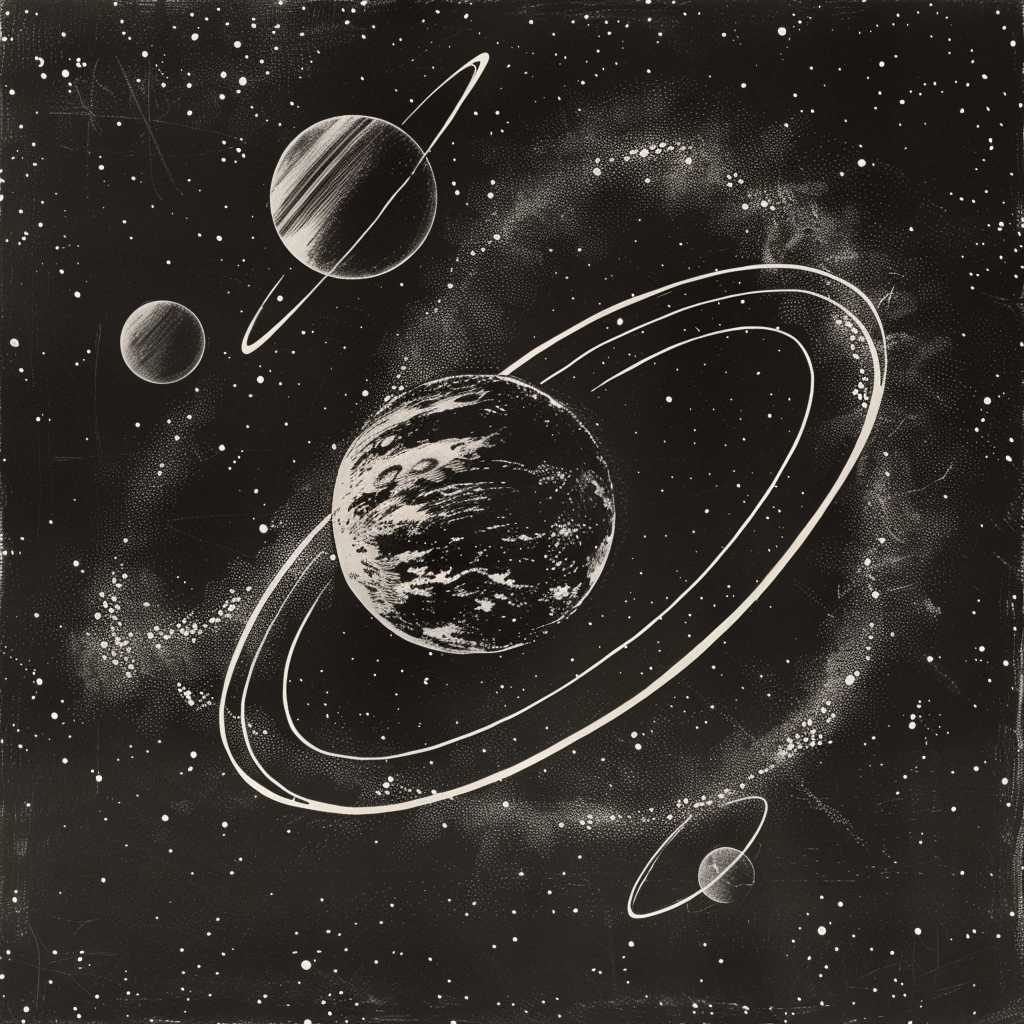Understanding the Three-Body Problem: Celestial Mechanics and Predictive Challenges
The three-body problem is a famous issue in classical mechanics that has vexed scientists and mathematicians for centuries. At its core, the problem deals with predicting the motion of three celestial bodies moving under their mutual gravitational pull. Since the 17th century, this problem has represented a formidable challenge in the field of orbital mechanics, impacting our understanding of systems ranging from triple star systems to the complex gravitational interactions in planetary systems like our solar system.
Historical Context: Origins of the Three-Body Problem
The three-body problem first arose out of attempts to understand the intricate movements seen in our night sky. Groundbreaking work by Johannes Kepler and his laws of planetary motion paved the way for Isaac Newton’s universal law of gravitation, which enabled a much deeper understanding of two-body problems such as a planet orbiting a star or a moon orbiting a planet. However, when introducing a third body into this system, the gravitational interactions become significantly more complex, leading to a problem that cannot generally be solved with simple analytic expressions.
Contributions to the research on the three-body problem have been made by some of history’s most gifted mathematicians, including Henri Poincaré, who used topological methods to analyze system stability, indicating chaotic behavior inherent in various systems. Even with modern computational techniques and numeric simulations, finding a one-size-fits-all solution that universally solves all three-body configurations remains elusive.
The Mathematical Challenge: Complexity within Gravitational Dynamics
Attempting to solve the three-body problem via traditional mathematics often leads to a series of incomprehensible differential equations without general solutions. This is because each body exerts an influence on the others, creating an ever-changing web of gravitational force interactions within the system.
Types of Three-Body Problems and Their Significance
Three-body problems can be classified into different scenarios based on their initial conditions and constraints.
Restricted vs. General Three-Body Problems
In simplifying the complexity, scientists often refer to subcategories like the “restricted” three-body problem, where one object is significantly less massive and its influence on the other two bodies can be ignored. Then there’s the “general” three-body problem where all bodies have significant mass and no simplified assumptions can produce accurate models.
Lagrange Points and Orbital Resonances
An important conceptual byproduct of analyzing three-body systems is the understanding of Lagrange points – positions in space where a small object affected only by gravity can theoretically be part of a constant-shape pattern with two larger bodies (such as a satellite with respect to Earth and the Moon). These insights have practical application in space mission trajectory planning.
Furthermore, studies on three-body problems have led to discoveries about orbital resonances where the gravitational relationship can create repeatable patterns over time, even among unpredictably interacting bodies.
Applications and Implications in Modern Cosmology
Accurately solving or making approximations for specific instances of the three-body problem is crucial for modern space missions involving multiple celestial bodies. Additional ramifications apply to understanding natural celestial phenomena such as identifying stable orbits for planets in multiple-star systems or exploring how exoplanets might behave when orbiting binary stars.
How Computers Have Changed Our Approach to the Three-Body Problem
Modern computational methods have allowed scientists to numerically simulate countless specific instances of the Three-Body Problem, if not solve them analytically. Supercomputers can produce remarkably reliable predictions for short periods but struggle to maintain long-term accuracy due to inherent chaos within such systems.
The Chaotic Nature of Three-Body Interactions
As emphasised by Poincaré’s work, even with precise initial conditions, systems described by three-body interactions show sensitivity to initial conditions characterizing chaotic behavior. As time progresses, minor differences can lead to widely divergent outcomes rendering long-term prediction nearly impossible—a feature known as deterministic chaos.
Notes
Image Description: An illustrating sketch showing three celestial bodies of varying sizes, set against a starry backdrop suggesting space, with curved arrow lines around them representing their complex orbits influenced by their mutual gravitational forces.
